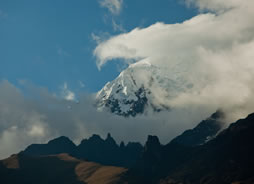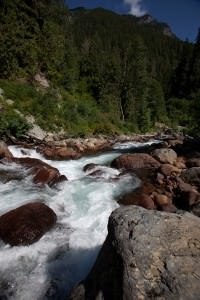 Nature photography is a wide umbrella that includes landscape photography, wildlife photography, plants, bugs and outdoor subjects in general. But architecture, people, machines tend to be excluded from nature photography.
Nature photography is a wide umbrella that includes landscape photography, wildlife photography, plants, bugs and outdoor subjects in general. But architecture, people, machines tend to be excluded from nature photography.
Nature photography is often the domain of the fine art photographer but is also used for scientific reference, travel photography and can be seen in some of the greatest magazines of all time, such as National Geographic and Audubon publications, illustrating the fascination with nature, either seen from very close up as in macro or microscopic photography or at a distance as in landscape or scenic photography. In the case of wildlife photography, nature photography investigates the life of animals, birds, fish, usually in their natural habitat and can expose us to aspects of the natural world that many of us would never otherwise witness.
A wide gamut of equipment is often needed in nature photography. For wildlife, a long telephoto lens is almost essential. For close-ups of the insect world, macro lenses which will give one-to-one magnification and show nature in its infinite detail. When you think of nature photography, you often think of staring into the eyes of a butterfly at close quarters or seeing the intricate details of the inside of a rose or orchid. This is macro photography. Special flash equipment is sometimes used (ring flash – where the electronic flash goes around the lens) to get even lighting at such close quarters. Lovers of nature photography tend to see details that others miss. The glint of sunlight on a frosty leaf, the patterns made by some plants when you get in really close, and so on. Successful nature photography includes the use of the right equipment which can include the whole range of lenses from extreme telephoto, through wide angle
to macro lenses, a sturdy but lightweight tripod, electronic flash, remote controls and so on.
 A sense of lighting, color and composition are all essential to quality results in nature photography. Compare two photos of an eagle taken by different photographers, one an advanced amateur or pro and the other a beginner, and you see right away that beautiful or striking nature photography is not just a matter of being in the right place at the right time, although that is a factor. Patience, particularly in wildlife photographers, can make the difference
A sense of lighting, color and composition are all essential to quality results in nature photography. Compare two photos of an eagle taken by different photographers, one an advanced amateur or pro and the other a beginner, and you see right away that beautiful or striking nature photography is not just a matter of being in the right place at the right time, although that is a factor. Patience, particularly in wildlife photographers, can make the difference
between success and failure in nature photography.
So what if all you have is a good point-and-shoot camera – is nature photography out of the question for you? Not at all. Most decent point-and-shoot cameras have macro settings and zoom lenses that give you a fair range from wideangle to telephoto which can be extended with adapters added to the camera. If you love nature and have an eye, you can get some spectacular shots without recourse to more advanced equipment.
The main skill is in seeing and appreciating what is there and then capturing it as you see it sothat you can share with others.
David © Phillips is a professional writer and photographer living in Seattle, WA. You can find out more about him and his work at www.dcpcom.com. Photograph(s) in this article are © David C Phillips, All Rights Reserved.
